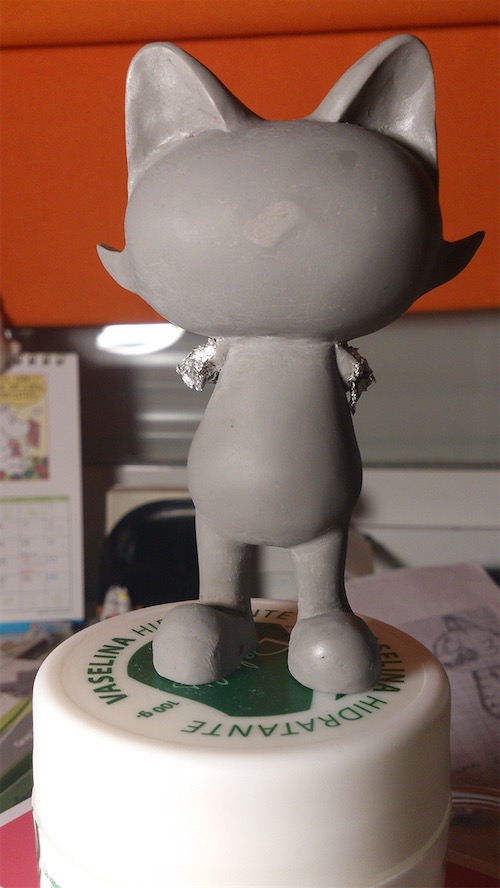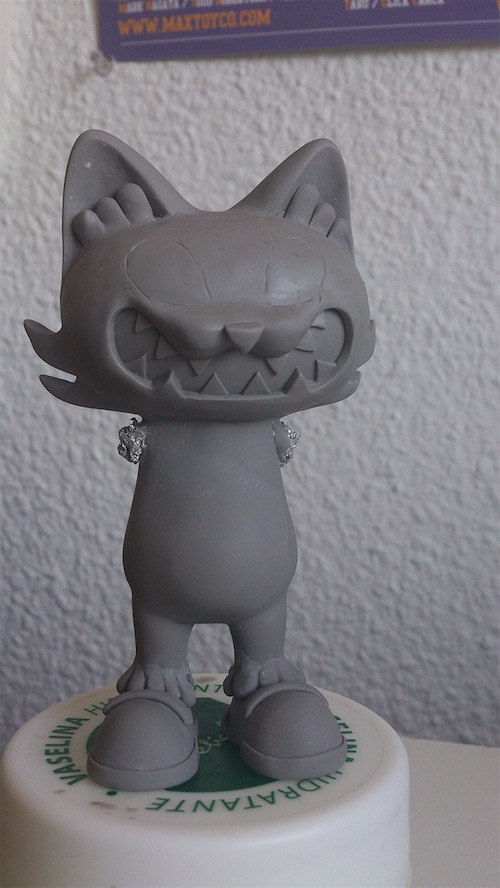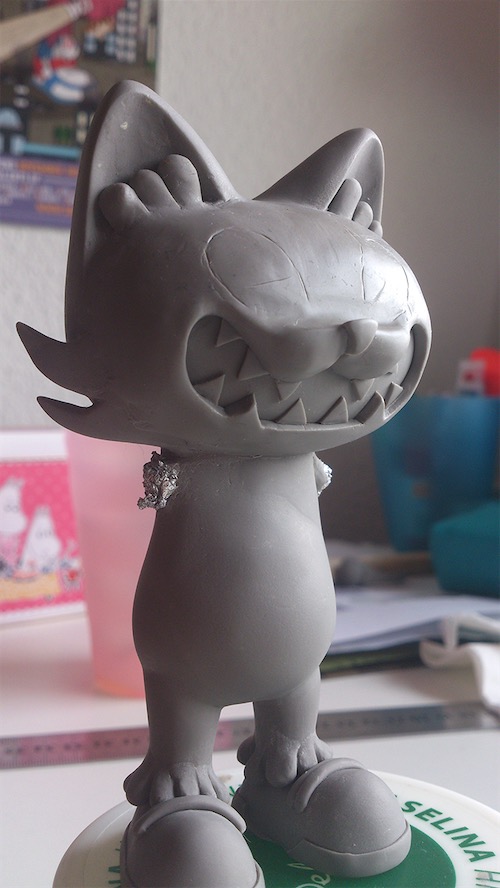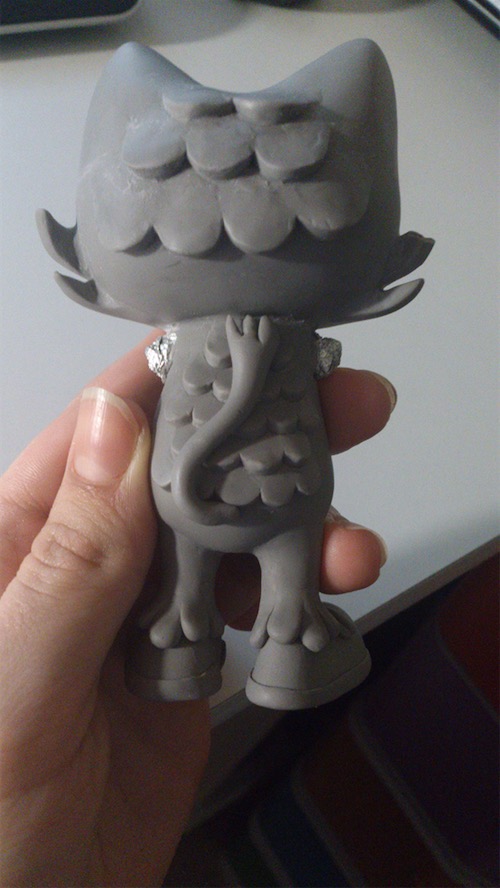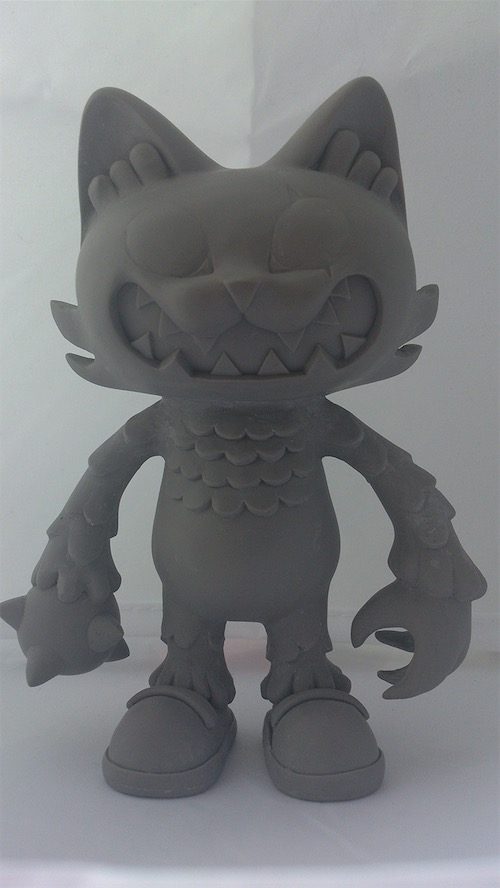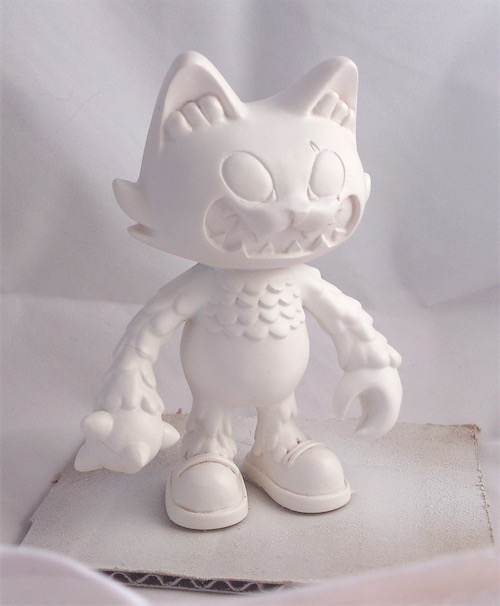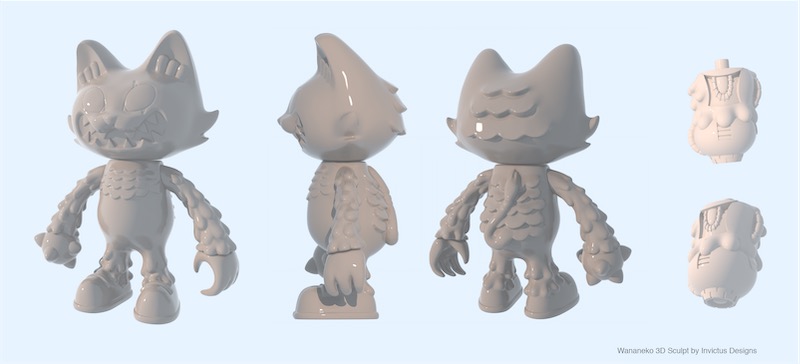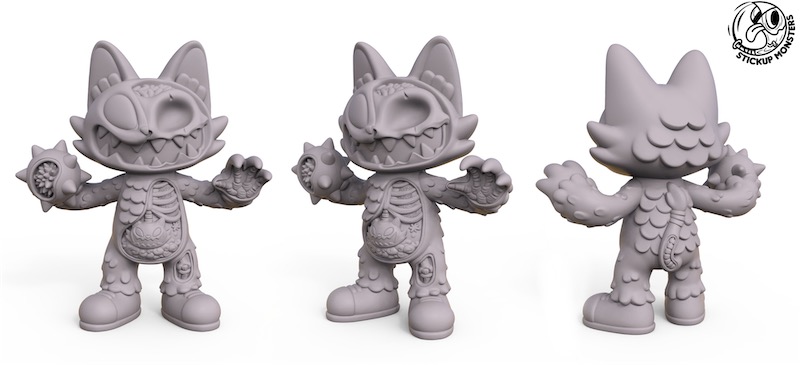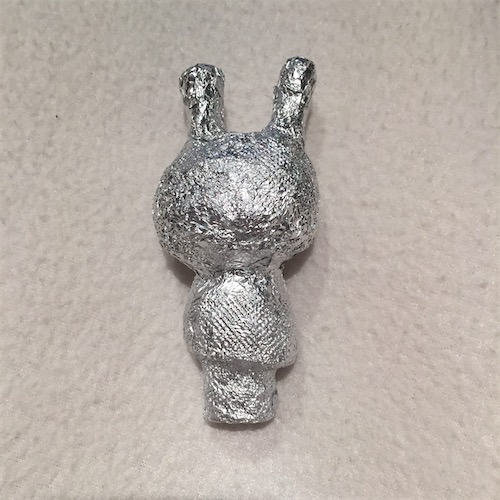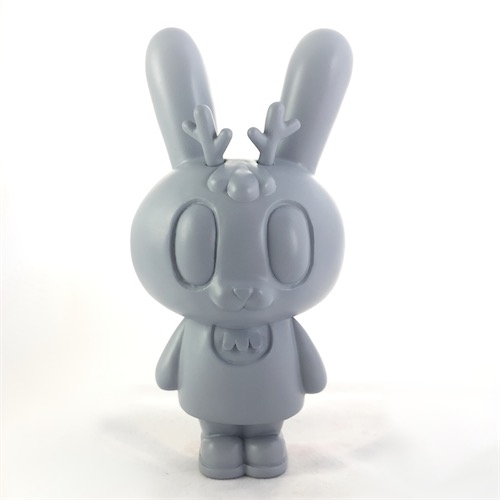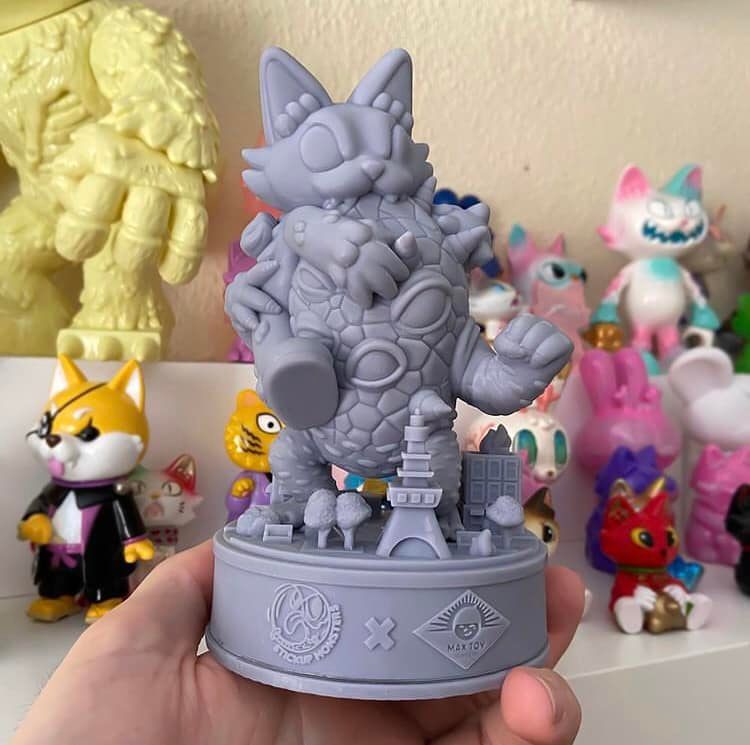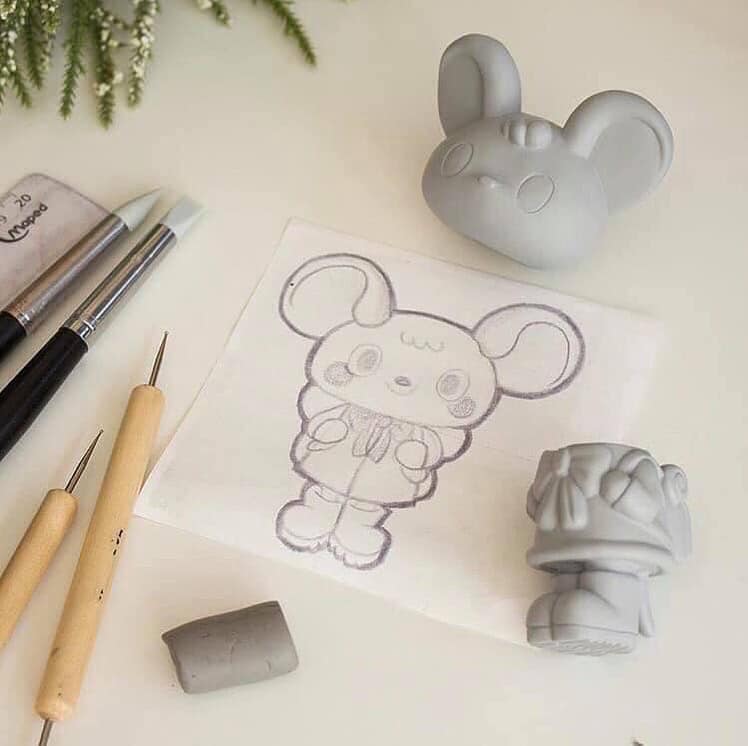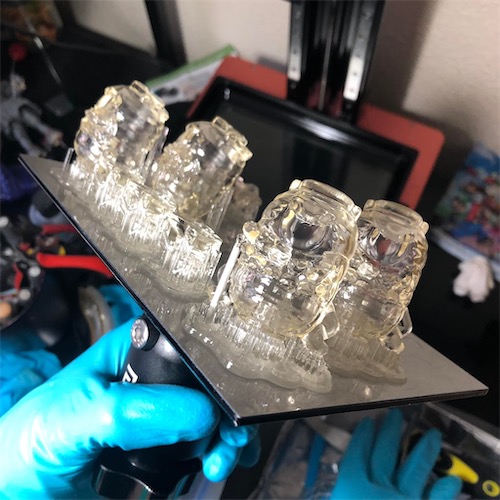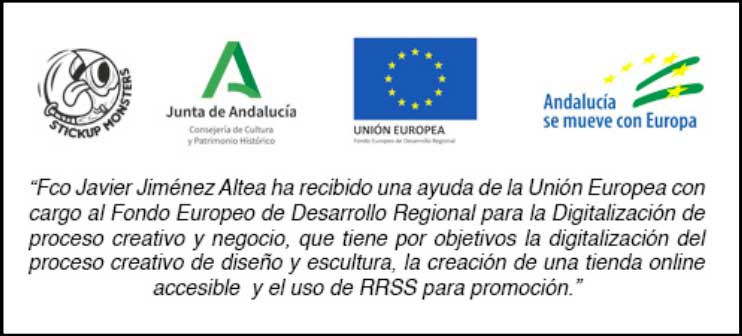Be it traditional or digital, we need to materialize our design through sculpting and prepare said sculpt for it’s mass production.
In StickUp Monsters we’ve worked with both traditional hand sculpting, with sculpts from artist Cristina Ravenna, but also digital sculpts from sculptors like Victor Marin, Dante Rockford and Andrea Calleja. In the case of digital sculpting, 3D printing the model is needed.
Each method has it’s own advantages and disadvantages.
Traditional sculpt has a lot of charm. The prototypes for many of the toys we played with when we were kids in the 80s and 90s were hand sculpted and it’s easy to recognize it for how organic their shapes are and their lack of symmetry.
Digital sculpting offers many possibilities, and thanks to 3D printing it’s become a very accesible way for ge- tting prototypes ready. Since we work with a digital file, we can print as many copies as we need and even change their scale. If there’s any problem with our prototype (like it breaking), we could just print another one. But it’s very important to find a sculptor with the ability of giving life to the pieces they sculpt, as it’s easy to end up abusing of symmetry and certain textures to save time, which can give a quite generic look to the toy.
You can watch me and sculptor Dante Rockford talking about 3D sculpting in the following video:

